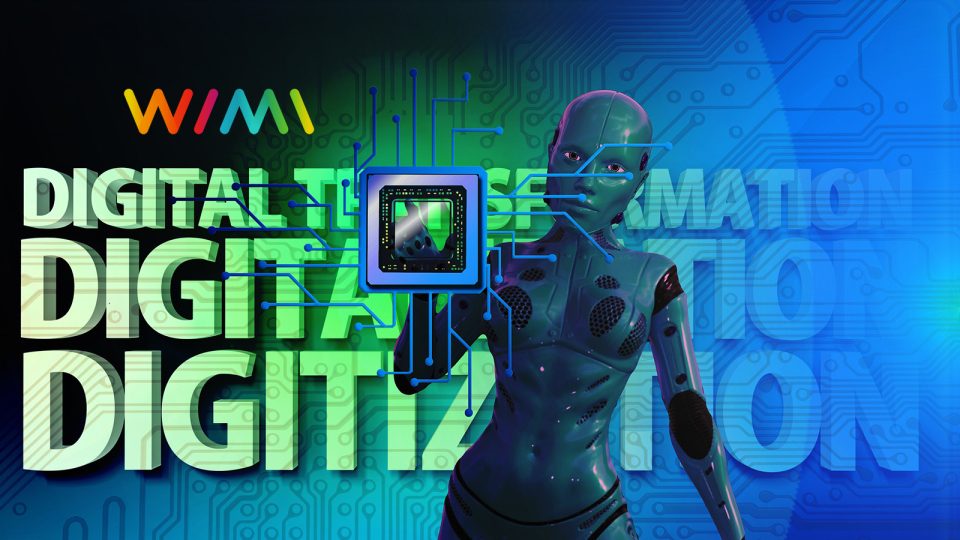WiMi Hologram Cloud a leading global Hologram Augmented Reality (“AR”) Technology provider announced that it developed the technology “HoloMuxAI: deep learning assisted holographic polarization multiplexing”, which is an innovation based on the framework algorithms of unsupervised deep learning computer-generated holography. The innovation of this technology lies in the application of deep learning, i.e., unsupervised learning methods to directly obtain profiles of hypersurface structures from independent holograms.
 Read More: CIO Influence Interview with Adam Frank, SVP of Product & Marketing at Armory
Read More: CIO Influence Interview with Adam Frank, SVP of Product & Marketing at Armory
WiMi’s HoloMuxAI: deep learning-assisted holographic polarization multiplexing combines deep learning and hologram processing to simplify the design and generation of polarization multiplexed holograms. The following are the main components of the HoloMuxAI technology framework:
Data input: This part is used to accept the input data provided by the user, including the polarization information of the hologram and other relevant parameters.
Deep learning: This is the core of the technology and includes a trained deep learning neural network. The architecture and parameters of the model are carefully designed to suit the hologram processing task.
Hypersurface generation: Once the deep learning model receives the input data, it generates the structural profile of the hypersurface, which is key to achieving the desired polarization multiplexing.
Hologram generation: Using the generated hypersurface structure, it is combined with the input hologram parameters to generate the final holographic polarization multiplexed image.
Output: The final hologram can be digitally output for display, storage or further processing.
Feedback and improvement: The technology framework also includes feedback mechanisms to continuously improve the performance and accuracy of the deep learning model. This can be achieved by monitoring performance and user feedback in real-world applications.
HoloMuxAI technology:
Data acquisition and preparation: First of all, it is necessary to acquire a set of independent hologram samples that contain information in different polarization states. These samples can be generated through experiments or computational simulations. Each hologram sample needs to be represented in digital form and contain Jones matrix information.
Deep learning network design: Next, a deep learning neural network is used to learn the hypersurface structure profiles from these hologram samples. This neural network can be constructed using a convolutional neural network (CNN) and recurrent neural network (RNN) for extracting and learning features and patterns from the holograms.
Read More: CIO Influence Interview with Logan Welley, Vice President of Alliances at Fivetran
Training the neural network: Using the prepared hologram samples, the deep learning network will be trained. The goal of training is to enable the network to predict the structural profile of the hypersurface based on the input hologram data. This requires a large amount of labelled data and an appropriate loss function to ensure that the network learns to reconstruct the hypersurface correctly.
Model validation and optimization: After training is completed, the model is validated to ensure that it performs as required. If needed, the model can be further optimized and tuned to improve its accuracy and generalization.
Practical application: Once the model has been trained and validated, it can be applied to actual hologram design tasks. Users only need to provide the required polarization information and other relevant parameters, and then use the deep learning model to generate the corresponding hypersurface structures to achieve the desired holographic polarization multiplexing.
WiMi’s HoloMuxAI technology combines the power of deep learning, making it possible to automate the generation of complex holographic polarization multiplexing images without the need for manual design and complex physical calculations. The strength of the approach lies in its versatility and scalability. It can be applied not only to polarization multiplexed holograms, but can also be extended to other multiplexed holograms, with the potential for a wider range of applications.
WiMi’s HoloMuxAI: deep learning-assisted holographic polarization multiplexing technology has great potential for development. First of all, this technology represents a breakthrough in the field of information processing and display, and creates new opportunities for the widespread application of holography. It will transform areas such as virtual reality, medical imaging, communications and data storage, enabling us to better utilize polarization information to provide clearer and more vivid images and data transmission. Second, the successful implementation of WiMi’s HoloMuxAI technology will also facilitate the application of deep learning in other fields. This information-driven approach can be applied to a wider range of problems, from materials science to autonomous driving, from natural language processing to bioinformatics, bringing the power of deep learning to more fields and driving technological innovation.
WiMi’s HoloMuxAI: deep learning-assisted holographic polarization multiplexing is a revolutionary technology that breaks through the limitations of traditional hologram technology through a deep learning approach. It not only simplifies the design and generation of holograms, but also brings new possibilities to the field of information processing and display. With the continuous development and application of this technology, there will be more exciting innovations and advances, which will profoundly affect our daily life and scientific research. The invention of this technology will unlock more potential in holographic technology and bring new opportunities and innovations in the field of holographic information processing and display.
Read More: CIO Influence Interview with Ed Anuff, Chief Product Officer at DataStax
[To participate in our interview series, please write to us at sghosh@martechseries.com]


